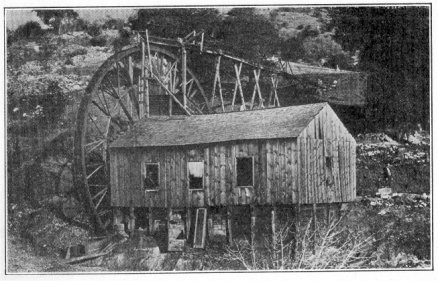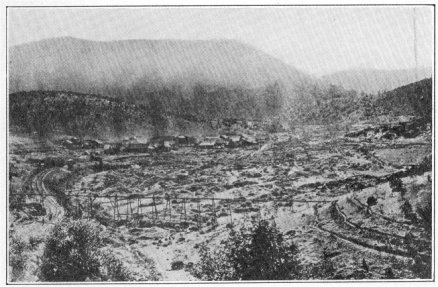Yosemite > Library >
Call of Gold >
3. Arrival of John C. Fremont >
Next: 4. First Settlers •
Contents
• Previous: 2. Gold Seekers
The Call of Gold (1936) by Newell D. Chamberlain
CHAPTER III
ARRIVAL OF JOHN C. FREMONT
In 1847, while Commodore Robert F. Stockton and Colonel
John C. Fremont were engaged in winning California from the
Mexicans, Fremont gave $3,000 to Thomas O. Larkin, American
consul at Monterey, with which to purchase a tract of land overlooking San Francisco Bay.
Just as Fremont and Stockton were completing their conquest,
there appeared on the scene, General Stephen Kearney, who
claimed supreme authority from the Government in Washington
to complete the conquest and establish a civil government.
Commodore Stockton, ignoring Kearney, commissioned Fremont
as Governor, and a conflict as to who had supreme authority
ensued. Fremont refused to recognize that a General had
authority over a Commodore, so he remained loyal to Commodore
Stockton, with whom he had previously co-operated so successfully,
with the apparent sanction of the Government in Washington.
A few months later, Kearney’s authority being confirmed, he
ordered Fremont to accompany him East, where he was court-martialed
and found guilty of disobedience and conduct prejudicial
to military discipline. He was sentenced to dismissal. President
Polk, refusing to approve the findings, except on technical
grounds, remitted the penalty, and desired Fremont to continue
in the service. Fremont, however, unwilling to concede that he
had done anything wrong, resigned.
Senator Benton, Fremont’s father-in-law, claimed that the verdict was a deliberate attempt to ruin Fremont by the West Point
element, as Fremont was not a West Pointer and had become too
popular. The people, generally throughout the Nation, considered
that he had been unjustly treated.
Just before leaving California, for the humiliating court-martial,
Fremont learned that Larkin, using his own judgment, had purchased with the $3,000 a tract of 44,000 acres in what is now
Mariposa County.
In October, 1848, he set out for California, with two objects
in view; first to find passes for a railroad from the Atlantic to
the Pacific; and second, to get back his $3,000, with which he
intended to settle down in California and study law.
Led astray by a guide, and after losing his entire outfit and a
number of his men and enduring extreme hardships, he turned
southward across the Rio Grande into Mexico. Later, continuing
his course westward, he encountered, along the Gila River, a
caravan of more than a thousand Mexican men, women, and
children, with their wagons, mules, and horses, going westward.
Asking the reason, he was told, “Gold has been discovered in
upper California”.
The news of the discovery of gold in California had traveled
to Mexico by steamer quicker than it had traveled overland. Fremont’s thoughts immediately reverted to the 44,000 acres which
he owned in California, but which he had never seen. Perhaps,
there was gold on his own land. Acting with characteristic quickness, he engaged twenty-eight Mexicans to work for him on his
Mariposa estate.
His plans had been changed, and his $3,000 investment was
to become a controlling influence on his career, enabling him to
become a national, and even a world figure. This was surely a
contrast to the humiliating court-martial and the herculean hardships, which he had just passed through. So, with the magic
words, “Gold has been discovered in upper California,” ringing
in his ears, John C. Fremont came, in the early part of 1849, to
Mariposa.
After placing his Mexican miners, whom he brought with him
and grubstaked, on some of the creeks on the property he expected to get, Fremont then endeavored to locate the boundaries
of his estate.
His deed called for a grant of land, known as Las Mariposas,
to the extent of ten square leagues, lying within the boundaries
of the Sierra Nevada (commonly known as Snow) mountains and
the rivers known by the name of Chauchilas, Merced, and San
Joaquin, as granted in 1844 by Micheltorena, then Governor of
California, to Juan B. Alvarado, who had conveyed it to Fremont.
It was a floating grant, with its exact boundaries undetermined,
at the time of making, and Fremont thought that he would be
entitled to his choice.
Some of his Mexican miners called his attention to the similarity of the quartz formation in the vicinity of Mariposa to the
“Veta Madre” or Mother Lode quartz gold belt in Mexico. With
the aid of a surveyor by the name of Von Schmidt, he ran the
lines of his survey from Mariposa Creek in a northwesterly direction to the Merced River, taking in what afterwards became generally known as the Mother Lode gold belt. It was not, for many
months later, generally known, and then it took several years to
prove, that gold lay in paying quantities in quartz veins in California. Fremont was the first man to prove it. His survey,
being in the shape of a frying pan, for a long time, was called
the “Frying Pan Claim”.
Fremont realized that it would be necessary for him to secure
financial assistance, in order to work his quartz veins. He, therefore, formed a partnership, to work part of his estate, with
Palmer, Cook & Co., a very prominent banking firm in San
Francisco, who were also very influential in politics.
The first steam quartz mill to be erected in the State, including
a small steam engine, was brought to Mariposa, in 1849, by
James Duff, who although part negro, claimed that he was the
first white man to settle on Mariposa Creek. The mill was put
up on Mariposa Creek, near the lower end of the present town, in
the month of August, 1849, and was operated by Palmer, Cook
& Co., for Fremont, and was known as the Palmer, Cook & Co.
mill. It had four stamps, which were lifted by the long iron cams,
shaped like the letter “S”, passing through a slot in the center of
each stem. It was of inferior construction and ran only for two or
three years, but its results proved that gold in quartz form would
produce infinitely more treasure than that contained in the hitherto
seemingly vast placers, which would soon become exhausted.
The first provisional State legislature met at San Jose, December 20, 1849, and John C. Fremont was elected U. S. Senator,
for the short term. He left soon afterwards for Washington,
where he was very influential in securing the admission of California, into the Federal Union, as a free State.
Next: 4. First Settlers •
Contents
• Previous: 2. Gold Seekers
http://www.yosemite.ca.us/library/call_of_gold/john_fremont.html

